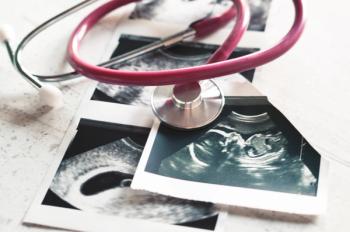
Childhood Cancer Survivors at Higher Risk of Stroke
As pediatric survival rates improve, long-term problems arise from other factors.
As pediatric survival rates improve, long-term problems arise from other factors.
Those who have survived childhood cancer are at a higher risk of having a stroke due to the extreme nature of their cancer treatment. The strokes come at a surprisingly young age and survivors suffering one stroke after treatment are twice as likely as non-cancer stroke survivors to have a second stroke.
The main predictors of recurrent stroke were cranial radiation therapy, hypertension, and older age at first stroke, according to the study. These factors can help physicians better determine which patients face a higher risk.
The findings provide strong evidence of the predictive factors associated with a stroke and tell physicians that they should practice stronger prevention strategies and treat modifiable stroke risk factors, such as hypertension.
“We are at a point where more children are surviving cancer because of life-saving interventions,” said Sabine Mueller, MD, PhD, director of the UCSF Benioff Children’s Hospital San Francisco and co-author of the study. “Now, we are facing long-term problems associated with these interventions.”
Researchers analyzed retrospective data from the Childhood Cancer Survivor Study, which followed 14,358 survivors diagnosed between 1970 and 1986 in the United States and Canada to track long-term outcomes of cancer treatment. All the patients evaluated were diagnosed prior to age 21.
To track the rate of stroke recurrence, researchers sent out a survey to those who had experienced a first stroke and asked them to confirm their stroke and to report if and when they had had another. The researchers analyzed the respondent demographics to determine potential predictors of recurrent strokes.
Seventy percent of the 271 respondents who reported having a first stroke had a second stroke. Those who had a first stroke faced a 21% higher risk of having a second stroke within the 10 years following the first event. The risk was even higher—33% —for patients who had received cranial radiation therapy.
This type of radiation therapy is strongly associated with the occurrence of a first stroke, according to prior research. In an earlier study, researchers found that children treated for brain tumors were 30 times more likely to experience a stroke compared with their siblings. Scientists are still unclear as to what exactly causes radiation to increase the likelihood of a stroke, but they suggest that high-dose radiation causes the blood vessels to constrict and encourage blockage.
“If they have one stroke, it’s not actually surprising that they have a high risk of getting another stroke,” said first author Heather Fullerton, MD, professor of Neurology, founder of the UCSF Pediatric Stroke and Cerebrovascular Disease Center. “You might use aspirin after the first stroke to try to reduce blood clots, but you’re not making those diseased blood vessels go away.”
While signs of diseased blood vessels are clearly visible through MRI scanning, many physicians are not told to look for these signs when following up with pediatric patients with cancer.
“The radiologists are so focused on looking in the brain area where the tumor used to be that they’re not looking at the blood vessels,” Dr. Fullerton said.
Following the findings of the study, UCSF has updated their protocol for brain tumor follow-up to include screenings for both blood vessel injury and modifiable stroke risk factors. However, this initiative has yet to be taken to a national level.
“If we could identify high-risk patients, we could recommend they be followed by a pediatric stroke specialist,” Dr. Mueller said. “That will be huge in providing effective follow-up care for these children.”
As the results of the study become more widely known, it is the hope of researchers and childhood cancer survivors alike that policies for follow-up will change to include screenings for stroke risk factors. Doing so will go a long way in preventing the debilitating event from ever taking place.
Newsletter
Stay informed on drug updates, treatment guidelines, and pharmacy practice trends—subscribe to Pharmacy Times for weekly clinical insights.










































































































































































































